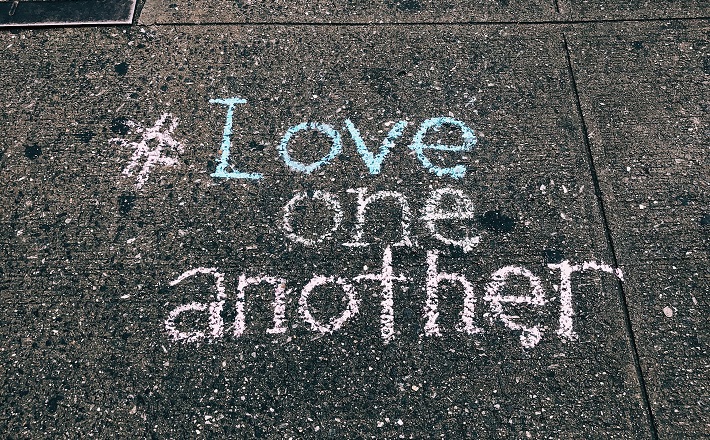Commentary on Revelation 21:1-6
John communicates much of the message of the Book of Revelation in images, that is, in word-pictures.
While Revelation 21:1-6 contains some imagery, its method of communication is a little more direct and propositional. This passage provides an explicit theological frame for interpreting the imagistic presentation of the new heaven and the new earth in Revelation 21:9-22:5.
Paying attention to the literary context helps the significance of Revelation 21:1-6 stand out. In their final confrontation, the Faithful and True rider (Jesus) captures the beast (Roman Empire) and false prophet (Roman imperial religion). The rider throws them into the lake of fire and kills their followers (Revelation 19:17-21).
While John here depicts this scene as a single battle, John has earlier indicated that the destruction of the Roman Empire is already taking place through the violence by which the Empire rules. John uses Revelation 19:17-21 as an imagistic way of confirming that this process will bring about the end of the Empire.
Setting aside the network of issues surrounding the infamous millennium of Revelation 20:1-10, we note that John paints a traditional apocalyptic picture of a final judgment of the dead. God consigns the unfaithful — those complicit with Empire and its idolatry, injustice, and violence — to the lake of fire where they will burn forever (Revelation 20:14-15; see also 20:10).
Against this background, heavy with judgment, John’s vision of the new heaven and the new earth falls on the ear with particularly forceful uplift. For all its positive character, the old heaven permitted the distortion of God’s purposes of Revelation 12:7-12. The new heaven and the new earth bespeak new structures of existence that do not permit the violations that were possible in the first heaven and the first earth.
As every first-year seminary student quickly learns, the sea in Jewish literature is sometimes a symbol of chaos. In the new world, the destruction of the sea means that chaos is no longer possible. This is in stark contrast to the chaotic social conditions in the Roman Empire.
John sees the new Jerusalem come down as “a bride adorned for her husband.” The phrase “new Jerusalem” is a way of speaking of a community whose relationships fulfill the qualities of life in mutual support in covenant. On the one hand, the association of the new Jerusalem with a wedding evokes one of the most celebrative occasions in the Ancient Near East. On the other hand, brides were typically passive during the wedding and subsequently often led reduced lives. Today’s preacher could use this unfortunate association as an occasion to critique the feminine image in its historical context and the history of passivity often forced upon women.
The words from the loud voice from the throne speaks in a double entendre. On one level, it assumes “first things” in the broad sense of the old age. On another level, it evokes the Roman Empire which thought of itself as the earthly home of its deities. Most of the wealth of the Empire was in the hands of 1.5% of the population. Everyday living conditions in the Empire for those in the lower 98.5% of the social pyramid were often the source of tears, death, mourning, crying, and pain.
For the apocalyptic tradition, Death is not only the end of life but is personified as an active agent who works against life. In John’s world of thought, “mourning” was often associated not only with the grief that comes with ordinary life but specifically referred to mourning for the broken conditions of the old age. The violent behavior of the Roman Empire only reinforced these tragic characteristics.
By contrast, the sovereign God, Alpha and Omega, will make God’s home in the new community. According to Revelation 22:1-5, the holy city will not contain a temple since the people will have unmediated access to God. The notion of God “dwelling” with them invokes the memory of the exodus when God liberated the slaves from Pharaoh and the Egyptian empire and tented (dwelled) with people in the wilderness. The transition from the first heaven and earth to the new will be a painful time, but just as the divine presence carried the community from Egypt through the Red Sea and the wilderness to the promised land, so God is with the community in the current transition and will be immediately present in the new world. The power of Death will be destroyed. The qualities of life that create tears, mourning, crying, and pain will disappear.
John has in view a future community that comes about through divine action, much of which takes place through social process. Many Christians continue to believe that God will bring the new Jerusalem. Other Christians, including me, do not anticipate an actual, singular cosmic event. Nevertheless, I believe God is present and inviting people to partner with God in social reconstruction. God does not create the holy city by immediate divine action, but neither do we bring it solely based on human initiative.
From this point of view, Revelation 21:3-4 offers a principle for social criticism. The preacher might ask where and how empires today are creating conditions such as tears, death, mourning, crying and pain that deny God’s purposes for life. Where and how is God at work through social process to replace circumstances that create tears, death, mourning, crying, and pain with circumstances that replace those things with mutually supportive, covenantal community?
To John’s beleaguered community struggling to be faithful under Roman oppression, this hope may have seemed almost unbelievable. By quoting God in Revelation 21:5-6, John underlines the authority by which the community can believe this vision is trustworthy and true.
When God says, “It is done,” God does not mean that the transformation is complete in the present. Rather, the community can count on it because God guarantees it. In that sense, it is as good as done.
I know a lot of people who struggle similarly today. Indeed, 2,000 years have passed, and the number of people suffering has increased in almost immeasurable numbers. A preacher could think with the congregation about why it is possible to believe in a transcendent power that is at work on behalf of life in the face of so many tears and crying, and so much pain, mourning, and death. To many people thirsty for such confidence, a sermon helping them understand how it is possible to believe in transformed social world would be a gift from the spring of the water of life.


May 19, 2019